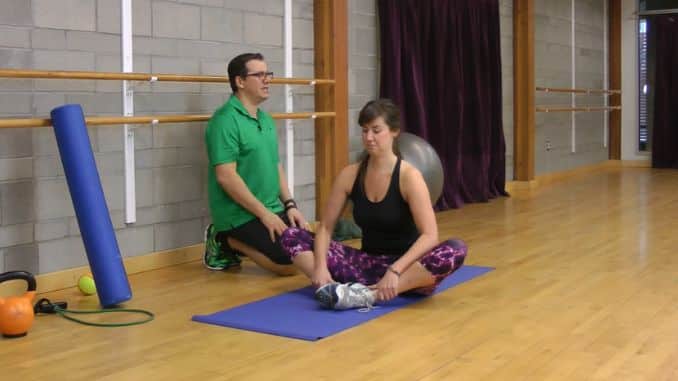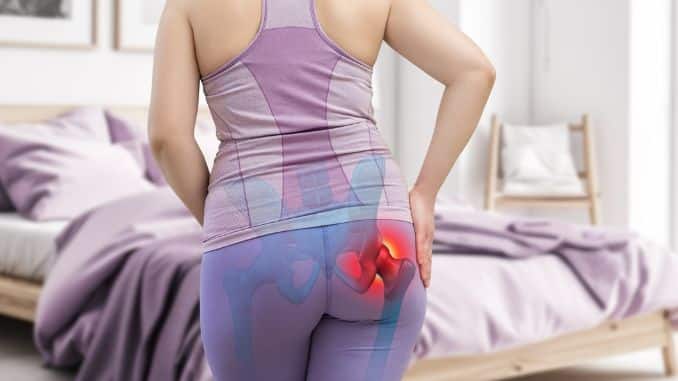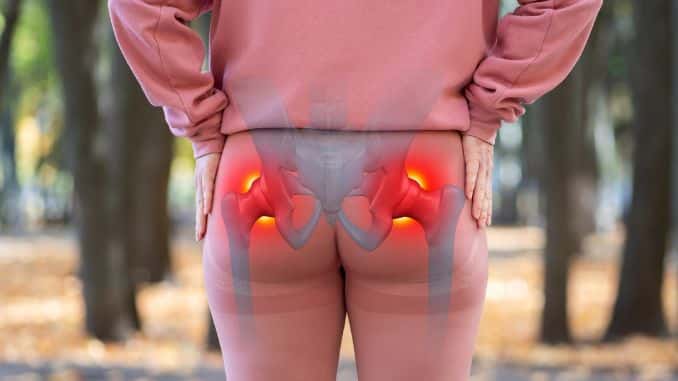Medical Disclaimer: The information in this blog is for enlightening and educational purposes only and is not intended as medical advice. The content in this post is not meant to substitute for a professional medical diagnosis, advice, or treatment. Always ask advice from your physician or other qualified health providers with any questions you may have regarding a medical condition.
Discomfort in the hip flexors during squats is a frequent issue, disrupting an otherwise beneficial lower-body workout. If you’ve ever experienced hip flexors sore after squats, you know how frustrating it can be. That sharp pain or pinching sensation deep in your hip joint? It’s your body’s way of saying something is off.
But don’t worry—you don’t have to give up squatting! We’ll break down the potential causes of hip pain, show you step-by-step exercises to fix it, and give you pro tips to keep your hips pain-free.
Understanding the root causes of hip flexor pain is the first step toward finding effective solutions.
Fix Your Squat! Try These Exercises First
If you experience hip flexor pain when squatting [1], addressing hip flexor tightness, poor mobility, and weak muscles is key. Try these exercises to reduce hip pain and improve your hip range of motion.
For beginners or those with severe tightness, start with lower intensity and gradually increase the range of motion and resistance.
Incorporate dynamic stretches like leg swings or walking lunges in your warm-up to prepare the hips for squatting.
1. Butterfly Stretch

- Begin in an upright sitting position on the floor, maintaining good alignment with your head, shoulders, and hips.
- Engage your core and bring the soles of your feet together, spreading your knees out to the sides while keeping your spine straight.
- Hold the position for several deep belly breaths, in through your nose and out through your mouth.
Start off with one set of 2 reps. Then, hold the end position for 20 seconds. The intensity is light. We’re focusing on a static stretch.
The purpose of this exercise is to loosen up the hips, stretch out the hips when it comes to rotation, and stretch out the inner thigh. The common reason why people have hip flexor pain when squatting is that they have excess tightness in the hips.
2. Foam Rolling Out The Hamstring
For this hip flexor pain from squats exercise, you don’t need a 3-foot foam roller. You can use the 1-foot foam roller.
- Begin in an upright sitting position on the floor with your knees bent and feet flat on the floor.
- Place the foam roller just below the hip.
- Straighten one leg and place your hands at the back to support your balance as you lift your hips off the floor.
- Tighten your abdominal muscles. Roll through the hamstring to just before the knee, and then roll back up.
- Repeat the movement with 5 repetitions.
- Relax and repeat the movement on the opposite leg.
- Start with one set of 5 reps. Perform this exercise in a smooth, controlled movement with a quick stop at the end position. The intensity is moderate.
- You may want to put as much body weight on the hamstring or foam roller, and it should feel like you are getting a massage. It should be a little bit uncomfortable when you are doing it.
- If you don’t feel that much, you can rotate the leg in and out, specifically rotating it from the hip. This will target the different parts of the hamstring.
This exercise targets to loosen up the hamstring and the opposite or back part of the hip.
3. Hip Flexor Exercise With A Ball
For this exercise, you can use any ball, like a tennis ball, cross ball, softball, baseball, or dog ball. The smaller and the firmer it is, the deeper it will press on the muscles and the deeper the massage will be.
- Lie on your stomach with your legs extended.
- Bend your elbows to lift your upper body as you bend one knee out to the side to support your balance. Place and press a small ball on the hip area.
- Tighten your abdominal muscles, then, move in circles around the ball, do it from one direction five times, looking for sensitive and tight areas.
- Afterward, do another five times in the other direction. Relax and repeat the movement on the opposite side.
If you find the sensitive area, stop on that spot for a couple of seconds until it subsides a little bit, then continue with the rotation.
- Start with one set of 5 reps in each direction.
- Perform this exercise in a smooth, controlled movement with a quick stop.
- You may want to put a lot of weight onto the ball. It should feel like you are getting a massage. Y
- ou are looking for extra sensitive areas.
- Stop on those sensitive areas for a couple of seconds until they subside a little bit, and then continue with your circles throughout the hip.
The purpose of this exercise is to release the hip flexor or the quadriceps muscles to improve the movement in the hip and relieve hip flexor pain when squatting.
4. Hip Flexor Exercise Using A Resistive Band
For this exercise, you can use a resistance band.
- Begin in an upright standing position with your feet shoulder-width apart, and maintain good alignment with your head, shoulders, hips, and legs.
- Step on the center of the resistance band.
- Hold the ends of the resistance band with each hand. Pull the band at hip height.
- Engage your core muscles. Hinge through your hips to move your upper body forward as you bend your knees to move into a squat position.
- Hold the position for a couple of seconds.
- Raise back up to return to the starting position and repeat the movement with 5 repetitions.
You can bring the handles of the resistance band up to the shoulder if you want to increase the resistance.
- Start with one set of 5 reps. Perform this exercise in a smooth, controlled movement with a quick stop at the end position.
- The intensity can be light to moderate, depending on how strong you are in the knees and hips.
The purpose of this exercise is to strengthen the muscles around the knees, specifically the muscles around the hips targeting the glutes and the hamstrings.
Potential Causes of Hip Flexor Pain When Squatting

Hip flexor pain during squatting can stem from various causes, including muscle strains, overuse injuries, or biomechanical issues. Dr. Yung Han, an orthopedic surgeon, emphasizes that such pain often arises from acute injuries, overuse, or a sedentary lifestyle. He advises that most cases can be managed non-surgically through rest, anti-inflammatory medications, stretching, strengthening exercises, and physical therapy to address muscle imbalances and improve biomechanics.
Experiencing hip pain during squats? Here’s what might be causing it:
1. Tight Hip Flexors
Prolonged sitting keeps hip flexors in a shortened position, reducing their flexibility and contributing to tightness or discomfort during movement like squatting. If you often find your hip flexors sore after squats, it may be due to inadequate mobility work before training.
2. Femoroacetabular Impingement (FAI) [2]
A condition where bone growth in the ball-and-socket joint causes a pinching sensation in the hip.
3. Hip Bursitis
Inflammation of the hip bursa, leading to pain when performing squats.
4. Poor Squat Mechanics
Issues like leaning forward, a narrow squat stance, or improper foot position can stress your hip flexors. If your hip flexors sore after squats is a recurring issue, checking your form and adjusting your stance might alleviate discomfort.
5. Limited Ankle Mobility [3]
If your ankles don’t move well, your hips have to compensate, leading to hip impingement.
Helpful Tips for Pain-Free Squats

For minor issues, such as tight muscles or poor mechanics, the following adjustments may help. However, chronic pain or conditions like hip bursitis or FAI require medical consultation.
- Adjust Your Squat Stance: A wider stance or slight external rotation of your feet can improve comfort.
- Improve Core Stability [4]: A strong core prevents excessive movement in the lumbar spine, reducing hip stress.
- Strengthen Surrounding Muscles: Target glutes, hamstrings, and core to support the hip joint.
- Work on Ankle Mobility: If your toes are pointing straight ahead but your ankles don’t bend well, your hips suffer.
- Get Checked by a Physical Therapist: If pain persists, a physical therapy assessment can identify underlying causes like femoral acetabular impingement
Final Thoughts
Hip flexor pain when squatting isn’t just frustrating—it can keep you from making progress in the gym. By addressing tight muscles, weak stabilizers, and poor mobility, you can get back to pain-free squats in no time.
Try these exercises, tweak your squat mechanics, and don’t ignore pain. If hip flexors sore after squats continues to be a problem, consult a physical therapist to rule out underlying conditions like hip bursitis or impingement.
Now, go fix your squat and crush leg day pain-free!
If you want to decrease and eliminate your back, hip, and knee pain and protect you from injuries, check out the Best Gluteus Maximus Exercises program here!
FAQ’s
Should I stretch my hip flexor if it hurts?
Yes, but gently. If the pain is from tightness, light stretching, and mobility work can help. If it’s due to injury, focus on rest and strengthening instead.
How to fix hip pain while squatting?
Improve hip mobility, warm up properly, adjust your squat stance, strengthen glutes and core, and avoid excessive forward lean.
Why are my hip flexors sore after squats?
If your hip flexors are sore after squats, it could be due to tightness, weak glutes, poor squat form, or overuse. Stretching, strengthening, and adjusting your squat stance can help reduce discomfort and prevent recurring pain.
Do lunges work hip flexors?
Yes, lunges stretch and strengthen hip flexors, but excessive lunging can overwork them if they’re already tight or weak.
Can tight hip flexors affect squat depth?
Tight hip flexors limit your ability to achieve proper squat depth by restricting hip mobility. Stretching and strengthening exercises can help.


